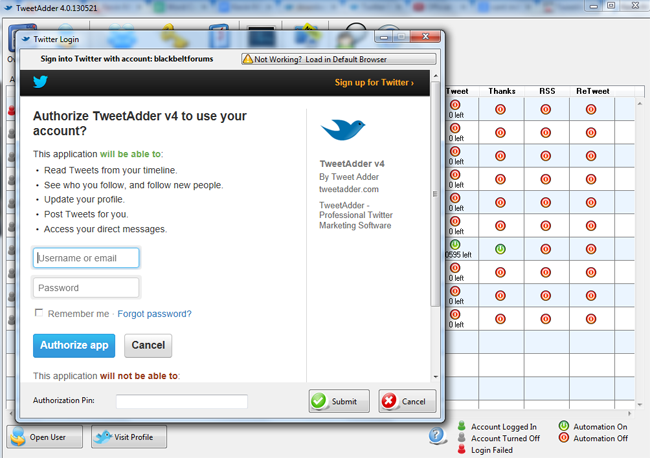

- #TWEETADDER 4 CRACK HOW TO#
- #TWEETADDER 4 CRACK UPDATE#
- #TWEETADDER 4 CRACK CRACK#
Your experience and background can vary widely from the next candidate.
The interviewer might have been nodding along to your answers, but they might’ve known that you’re just bluffing your way through and not actually thinking about the problem. Don’t waste the opporunity trying to figure out what someone else might expect of you. In a systems design interview, it’s an opportunity for you to demonstrate what your strengths are. I actually highly discourage anyone from doing this for several reasons: Often times I see engineers trying to figure out what the interviewer is trying to ask, and then catering their responses to fit the expectations. These are quite interesting discussions that you can have with a colleague, and that is a very strong signal an interviewer is looking for. I’ll talk about how the client interacts with the middle-tier endpoints, how logging would work, how I’d design the backend to ensure uptime, and so on. I’d probably explore iPhone-specific problems as well, due to my experience. For my own specific background, I might delve really deeply into API design and backend infrastructure. If you haven’t realized it yet, the end result of the exercise above would yield significantly different results. Better yet, you can leave your notes in the comments below and we can discuss further. Go as deeply and widely as you can, and then come back to this article. You are not being judged on whether or not you asked a specific question during the interview, but you are judged on how you think about the problem space.įor example, if I were to ask you to design Twitter right now, how would you do it? Take a few minutes to think about it, and maybe even sketch it out on a piece of paper. My ideal box with a smiley faceĪlways ask clarification questions. It is meant to be hugged, not held, so I don’t want any handle on it. It will be at least 0.5m in radius and weighs about 1kg. This is not an ordinary tennis ball, however. To that I might say, let’s build a yellow box with a smiley on it that should hold at most 1 tennis ball. In the black box example, you might ask, “well, what does the box hold? How many items does it hold? And who is the intended user?” 
Informs you of possible bottlenecks/problem areas.Gives you direction about where to proceed.Helps clarify what the user expectation of the system is.Helps you narrow the scope of what you’re supposed to do.

What are “good” clarification questions, you ask?Ī good clarification question helps you achieve one, or more, of several things: One of the most useful strategies I personally employ is to ask clarification questions. How would you tackle the problem? There are no clear directions on what you need to build here, aside from the box being able to hold some items within it. Imagine that you’re being asked to design a black box.
What you can do to remove these bottlenecks. How you would think about the problem space. A good system design question usually sounds very ambiguous, and the reason for that is it’s supposed to give you a chance to demonstrate the following: There are no strictly right or wrong answers. This article is broken down into the following four sections:Ī core aim of a systems design interview is to give the candidate an opportunity to demonstrate their knowledge. How to System Design: Tips from a Twitter software engineer
Update (): If you’d like to join a group of students to learn more about system design, I’m organizing a small class together! You can go to this link to learn more, or visit my website: for more info. If you’re a fresh graduate with no experience in large-scale distributed systems, or even a seasoned engineer with years of experience under your belt, this article will be useful for you. In this article, I’d like to share those tips with you all. During my interview preparation process, I read up on a lot of material and prepared a set of notes on how to tackle system design problems. I recently wrote about how I landed offers from multiple top-tier tech companies.
By Zhia Hwa Chong Crack the System Design interview: tips from a Twitter software engineer







 0 kommentar(er)
0 kommentar(er)
